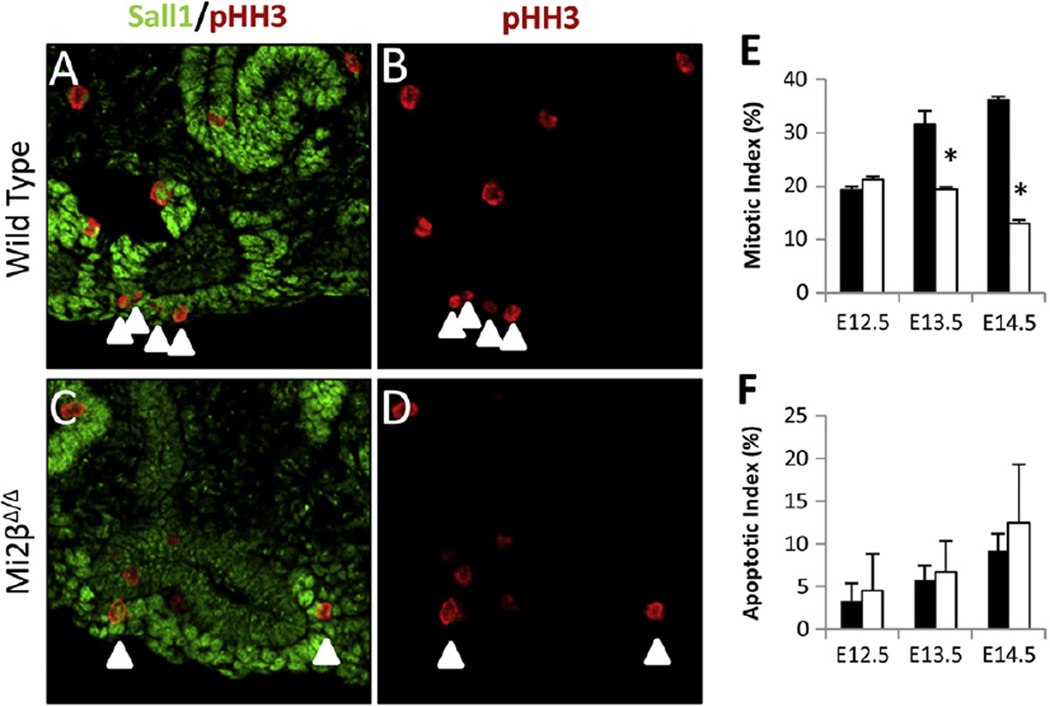Fig. 5.
Proliferation but not apoptosis is decreased in Mi2β mutants. (A–D) Proliferation of Sall1-positive CM cells as determined by pHH3 staining at E13.5. Arrowheads indicate CM cells that were scored as pHH3-positive. Sall1/pHH3 merged (A, C) and pHH3 staining alone (B, D) are shown. (E) Double-positive Sall1 (green) and pHH3 (red) CM cells were counted and expressed as a percentage of the total number of Sall1-positive CM cells surrounding UB tips in E12.5–E14.5 wild type (black bars) and Mi2βΔ/Δ kidneys (white bars). At E12.5 proliferation of CM cells was similar in wild type (19 ± 0.7%) and Mi2βΔ/Δ (21 ± 0.6%) [n = 2, total of 104 cells counted in wild type and 66 cells in Mi2βΔ/Δ kidneys. However, at E13.5 the percentage of proliferating cells was significantly decreased in Mi2βΔ/Δ kidneys (19 ± 0.5%) compared with wild type littermates (A, B) (32 ± 2.5%) [n = 2, total of 250 cells counted in the wild type and 221 in Mi2βΔ/Δ kidneys]. Reduction in cell proliferation persisted at E14.5 in Mi2βΔ/Δ kidneys (13 ± 0.7%) compared to wild type (36 ± 0.7%) [n = 3, total of 208 cells counted for wild type and 200 cells for Mi2βΔ/Δ kidneys]. (F) Apoptosis of Sall1-positive CM cells as measured by TUNEL assay (see Supplementary Fig. 1S) in E12.5, E13.5, and E14.5 wild type (black bars) and Mi2βΔ/Δ kidneys (white bars). There was no significant difference in TUNEL-positive CM cells between wild-type and Mi2βΔ/Δ kidneys.

